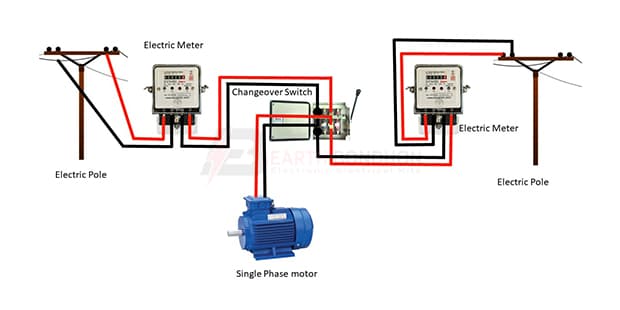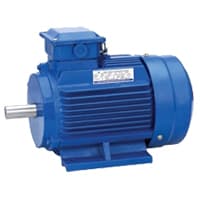Single Phase Motor Changeover Connection:
This diagram shows how to make Single Phase Motor Changeover Connection. In this circuit, we use a single-phase motor, two electric meters, and a changeover switch. This circuit is very simple and easy to make, if you want to know more about this circuit please stay with our website and check our youtube video below the post. For more information please check our website category and post for other information.
Advertisements
Components needed For this Project:
You can get the components from any of the sites below:
- Single Phase Energy Meter [See Buy Click Amazon]
- Dual Power ATS Generator Changeover [See Buy Click Amazon]
- Single Phase Motor (1 HP) [See Buy Click Amazon]
*Please note: These are affiliate links. I may make a commission if you buy the components through these links. I would appreciate your support in this way!
Advertisements
Components used to make the Single Phase Motor Changeover Connection:
A Single-Phase Energy Meter is a sort of Watt-Hour meter. It consists of two Electromagnets. Single-Phase Energy Meter is also Popularly known as a watt-hour meter. 1 Magnet is called the shunt magnet Ml which is Mounted with a Pressure coil. The Pressure coil is a long coil Made of fine Copper wire that is connected across the Supply single-phase line. Single-phase energy meters are suitable for measuring single-phase AC current flow frequencies of 50/60 Hz, which are used for fixed indoor installation systems.
02. Changeover Switch:
Change over switch is a medium of line transfer that is used in industry. Every industry has a supply line using change-over switches to supply power. A Changeover Switch is an Electrical Switch That Allows a load to be Changed from one Electrical Source to Another and vice Versa, Either Manually or Automatically. A Changeover Switch is specially made to transfer a house is electricity from the Normally used Commercial Power supply grid to a more local Generator when a power Outage Occurs.
A Single-Phase Motor is an Electrically-Powered Rotary Machine That Can Turn Electric Energy into Mechanical Energy. It Works by Using a Single-Phase Power Supply. Single-phase Motors Are Used in Equipment And Machines That Are Smaller in Size And Require Lower Horsepower. This Includes Equipment Such As Refrigerators, Pumps, Compressors, Fans, and Portable Drills. Single-phase motors Have a Similar Construction to The 3-phase Motor, Including an AC Winding That is Placed on The Stator And Short-Circuited Conductors That are Placed in a Cylindrical Rotor.
Thank You for visiting the website. Keep visiting for more Updates.
Frequently asked questions
A single-phase connection consists of 2- wires that make a simple network. However, the network is complicated on a 3-phase connection because there are four different wires. Because a single-phase connection has a phase wire, if anything happens to the network, the complete power supply gets interrupted.
This motor is similar to the three-phase motor except that it has only 2- windings (a-a' and b-b') on its stator displaced 90° from each other. The a-a' winding is connected directly to the single-phase supply.
When a single-phase AC supply is given to the stator winding of a single-phase motor, it produces alternating flux i.e. which alternates along 1 space axis only. It is not synchronously revolving (and rotating) flux, thus it cannot produce any rotation. Hence single-phase induction pump is not self-starting.
Three phase and single phase are electricity supplies and it's the amount of power supply that is different. A single-phase supply is smaller and most domestic houses with gas central heating need a single phase or have this as standard.
A run capacitor is used to smooth the motor's torque during each revolution, increasing efficiency or performance. It is usually much smaller than a start capacitor, often less than 60 uf, or of the oil-filled type to reduce energy losses.
Read more Single Phase Wiring
What is a kilowatt-hour (kWh) | kwh formula | What does kwh mean
Introduction to Electrical Units and CircuitskW and kWh on your electricity bill As your home uses electricity during...
What is the Difference Between kVA | What does KVA mean | kVA formula
Difference Between KVA ExplainedWhat does KVA Mean? There are technical terms aplenty when it comes to generators, and...
Power Factor | Power Unit | Energy | Electricity Unit
Power factor definition | Calculating Power FactorPower Factor Values In a purely resistive circuit, the power factor...




0 Comments